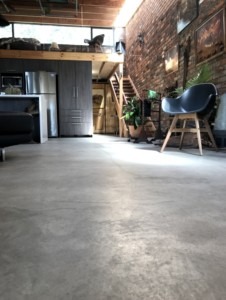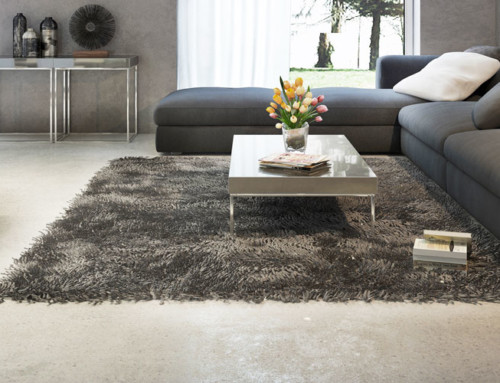With winter just around the corner, there’s no better time to invest in quality heating for your home. If you’re considering installing slab heating, it’s important to keep in mind that some flooring may work better than others. In this short article, we list the top 6 flooring options that work best with your slab heating.
But before we do, it’s also important to understand how slab heating actually works. Slab heating is a cost effective and energy efficient form of in-home heating which works by heating up water with a gas boiler, which is then distributed through concrete flooring in an upwards cycle. This particular process allows for even temperature distribution throughout the home’s floor while simultaneously eliminating any form of forced air like that of regular ducted heating.
Slab heating is typically installed during the time of the home being built and is generally used as the perfect heating solution for large open spaces such as the kitchen, dining and living areas with concrete slabs beneath them. With this in mind, it then becomes important to consider the type of flooring you’d like to have in those areas.
Ideal flooring options that work best with slab heating includes;
1. Tile Flooring
Ceramic flooring and stone tiles are often considered to be the most ideal flooring due to a variety of reasons. Factors including being great conductors of heat, having the ability to be heated up quickly and being effective hosts for absorbing and storing energy are just a few qualities that illustrate why tiling is a good choice for in-floor heating.
2. Laminate Flooring
Laminate flooring is a stable flooring solution that is not only cost effective but is also made up of layers of wood that run in opposite directions. Having wood structured in this manner allows for it to withstand the fluctuant changes in temperature caused by the heating system.
3. Engineered Wood Flooring
Similar to the point made above, engineered timber also has a layered structure which allows this particular type of flooring to remain relatively unreactive to the heating process and changes in moisture levels. That being said, engineered wood runs a close second option behind tiling as it also provides a strong base that acts as an effective conductor of heat.
4. Natural Stone Flooring
Natural stone flooring such as marble, travertine, terrazzo, granite and other similar stones are known to be great conductors of heat energy. Once the heat radiates from beneath the stone, it then will travel upwards from the bottom of the stone to the top. When the heat energy has travelled to the top of the stone, the stones’ heat retention quality will assist in keeping the floor warmer for longer, making it an ideal pairing for in-floor heating.
5. Concrete Flooring
Polished concrete is a good option when it comes to slab heating. Concrete also acts as a direct conductor of the heat energy that is being transferred into the room which helps you achieve the full benefits of the slab heating.
6. Carpet Flooring
As long as the carpet underlay is suitable for heated slabs, typically, most carpets should be suitable floor coverings to cater for slab heating That being said, it’s important to be mindful that the slab heating system will operate the same way as with any other flooring option. As the carpet itself does not conduct heat energy, it will therefore not feel warm to the touch. Despite this, it will still radiate throughout your home and warm your room as it travels through the underlay and carpet.
Flooring types that are not suitable for slab heating include options such as vinyl, hardwood and floating boards. This is because when heat is introduced with these particular flooring types, often you’ll often find that they’ll start to bend and move, discolour and even work against the glue which is not ideal and can lead to very costly renovations.
When deciding on a flooring option to work with your slab heating, be sure to always consult your flooring supplier and heating specialist as to whether the flooring option you decide on is appropriate for the heating system.









